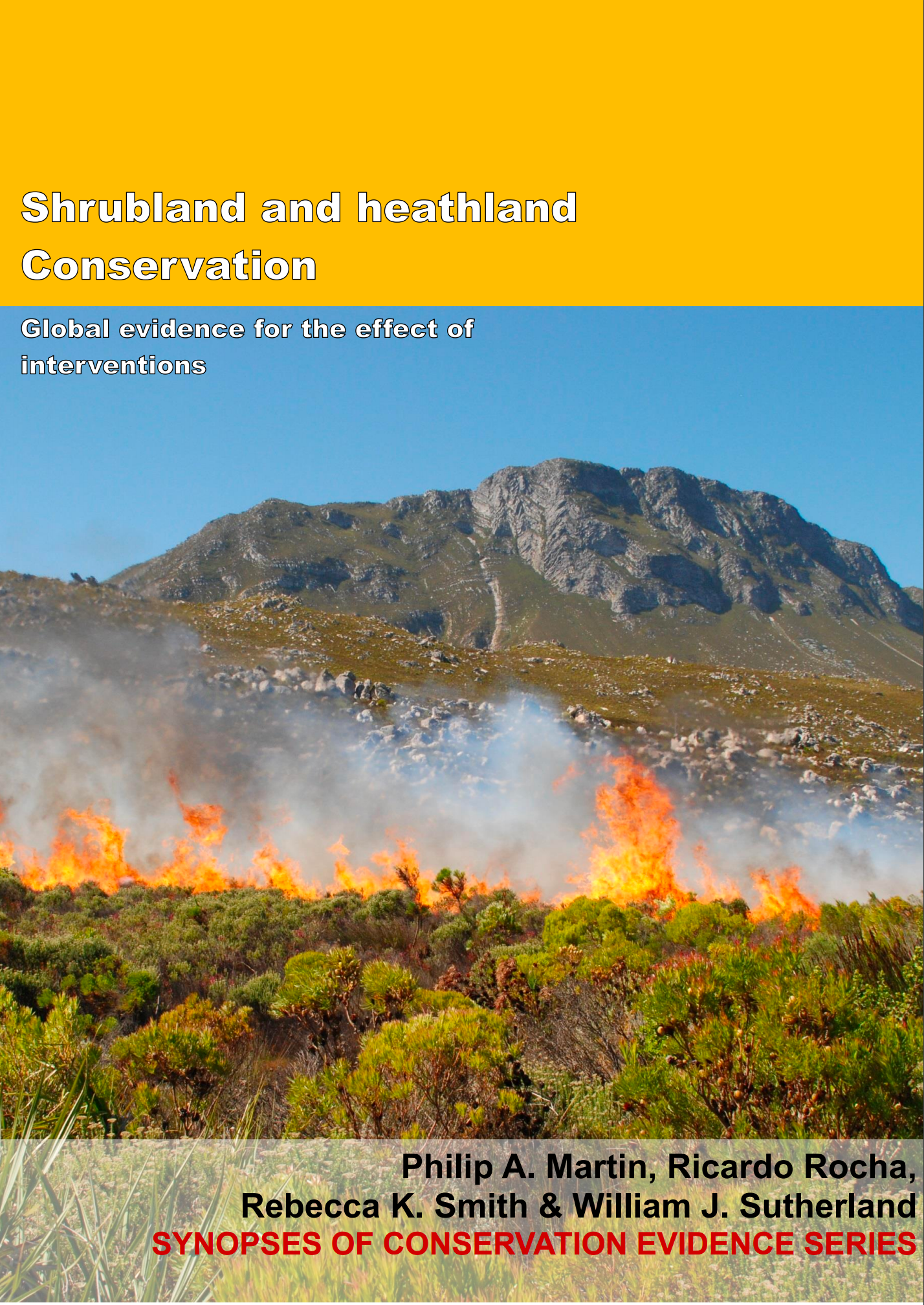Add sulphur to soil (alongside planting/seeding)
-
Overall effectiveness category Unknown effectiveness (limited evidence)
-
Number of studies: 3
View assessment score
Hide assessment score
How is the evidence assessed?
-
Effectiveness
20% -
Certainty
30% -
Harms
0%
Study locations
Supporting evidence from individual studies
A randomized, controlled study in 1994–1996 in an arable field near Aberdeen, UK (Lawson et al. 2004) found that the addition of sulphur to arable soil increased the survival of heather Calluna vulgaris seedlings after six months, but after two years almost all seedlings had died. In plots where sulphur was added survival of heather seedlings (26% survival) was higher than in plots where no sulphur was added (12% survival). After two years survival in plots where sulphur had been added (2% survival) was higher than in plots where no sulphur was added (0% survival). Sulphur was applied in eight 2.6 m x 2.6 m plots, while in eight other plots sulphur was not applied. All plots were sprayed with glyphosate to kill weeds in May 1995. One hundred seedlings were planted in each plot and survival was recorded after six, 12 and 22 months.
Study and other actions testedA replicated, controlled study in 2000–2006 in ten improved grasslands in Dorset, UK (Diaz et al. 2007) found that application of sulphur, followed by spreading of heather Calluna vulgaris clippings increased cover of heather in one of two cases and decreased the cover of perennial rye-grass Lolium perenne in one of two cases, but increased the cover of common bent Agrostis capillaris in one of two cases. In one of two cases, after five years, areas where sulphur had been applied and heather clippings spread had a higher cover of heather (heather: 24%) than areas where sulphur was not applied and heather clippings were not spread (heather: 0%). In one of two cases plots where sulphur was applied and clippings spread had lower cover of perennial rye-grass (0%) than areas where sulphur had not been applied and heather clippings were not spread (24%). However, in one of two cases cover of common bent was higher in areas where sulphur had been applied and clippings spread (34%) than areas where sulphur had not been applied and heather clippings were not spread (24%). In May 2000 and March 2001 sulphur was applied in twenty 2500 m2 plots. Heather clippings were spread on these plots in November 2001. Sulphur was not applied and heather clippings were not spread in ten 2500 m2 plots. In June 2006 plant cover was assessed using ten 4 m2 quadrats randomly located in each plot.
Study and other actions testedA randomized, replicated, controlled study in 1994–2003 in two agricultural fields in Suffolk, UK (3) found that application of sulphur, followed by sowing seeds of heathland species did not increase the cover of common heather Calluna vulgaris in four of six comparisons. After nine years and in four of six comparisons, cover of common heather in areas where sulphur had been applied and heathlands seed sown (0–13%) was not significantly different to that in areas where it had not been sown (0%). At both sites in 1994 sulphur was applied in twelve 80 m2 plots following which seeds of heathland species were sown. Italian ryegrass seeds were sown in eight of these plots. At each site in four other plots no seeds were sown. In April 2003 five 2500 cm2 quadrats were placed in each plot and the cover of all plant species recorded.
Study and other actions tested
Where has this evidence come from?
List of journals searched by synopsis
All the journals searched for all synopses
This Action forms part of the Action Synopsis:
Shrubland and Heathland Conservation
Shrubland and Heathland Conservation - Published 2017
Shrubland and Heathland synopsis





)_2023.JPG)














